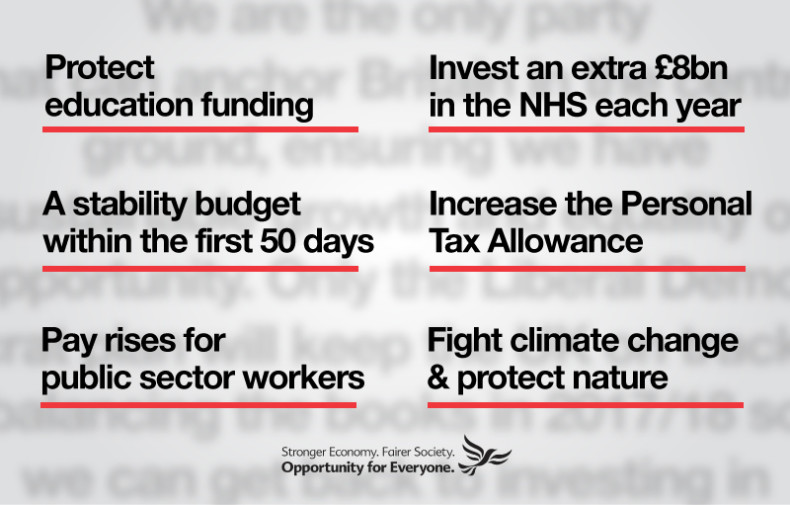What you need to know about the Liberal Democrats if there’s a hung Parliament

If there’s another hung Parliament elected on Thursday, I’ll be covering what the Liberal Democrats do in my Liberal Democrat Newswire email newsletter (sign up here). For the moment, here are five pieces of key information that you’ll need to understand events.
1. The “triple lock”
The Liberal Democrats have a “triple lock” process, culminating in a vote at a special conference, to decide on any hung Parliament arrangements before the party signs up to them. The details of this process – including membership of the party’s negotiation team and other key figures – are here: The Triple Lock.
2. The party’s priorities
They’re on the front page of the manifesto. But watch out: there are three front pages – with Scotland and Wales each having their own variation of the main manifesto in order to reflect the differences that devolution make to how government works. You can see all three of the Lib Dem manifesto front pages here.
3. The party’s ‘red lines’ on policy
See #2. The front page priorities have been rolled out as red lines during the election campaign. In some cases the wording of these red lines, having the full freedom of a press release in which to breathe rather than being constricted to a brief diamond on the manifesto front pages, has been expanded when rolled out.
Here’s where you can find them all in full:
- Economic red line (stability budget)
- Economic red line #2 (pay rises for public sector workers)
- NHS funding
- Income tax allowance
- Education funding
- Environment

4. The non-policy red lines
In addition to the manifesto front page, there was a red line about ministerial posts set out by Nick Clegg (without serious dissent in the party but also without the policy red lines type decision-making first). It was his refusal to serve in a Cabinet in with Nigel Farage and also his rejection of any coalition that required the SNP’s support in addition on a confidence and supply basis.
“His” because due to the narrower decision-making process compared with the policy red lines it is possible to envisage circumstances in which the party might decide to break these red lines and do so under a different leader.
5. What’s not a red line?
Everything else. Which includes – of particular relevance – having an in/out referendum on Europe during the 2015-20 Parliament. The party’s not in favour of having one, but it hasn’t made opposing one a red line – and the decision to omit it from the party’s list of top priorities has gone all the way through the party’s democratic decision-making processes.
It’s also worth remembering that there’s been some strong support for holding a referendum amongst some Lib Dem MPs during the 2005-10 Parliament, with three then frontbenchers resigning in order to vote in favour of having a referendum – including two possible contenders in a future leadership contest, Tim Farron and Alistair Carmichael.
Add to that Nick Clegg’s own support for not making a referendum a red line and, if the price is right, the party may well sign up to a deal including an in/out referendum.
That doesn’t mean nothing outside of the red lines would feature in a deal. Indeed, any deal would need to cover many other policy areas and so would feature many other Liberal Democrat policies too – as happened in 2010.
Remember too the triple lock process – a lot of people have to support a deal for it to go through and that’s why any deal would need to be good on, for example, civil liberties.
The red lines are a necessary component, not the totality of what will be needed for a deal to get the go ahead.
Thanks to Alex Wilcock for prompting the writing of this post and making some really helpful suggestions about its contents.
Leave a Reply